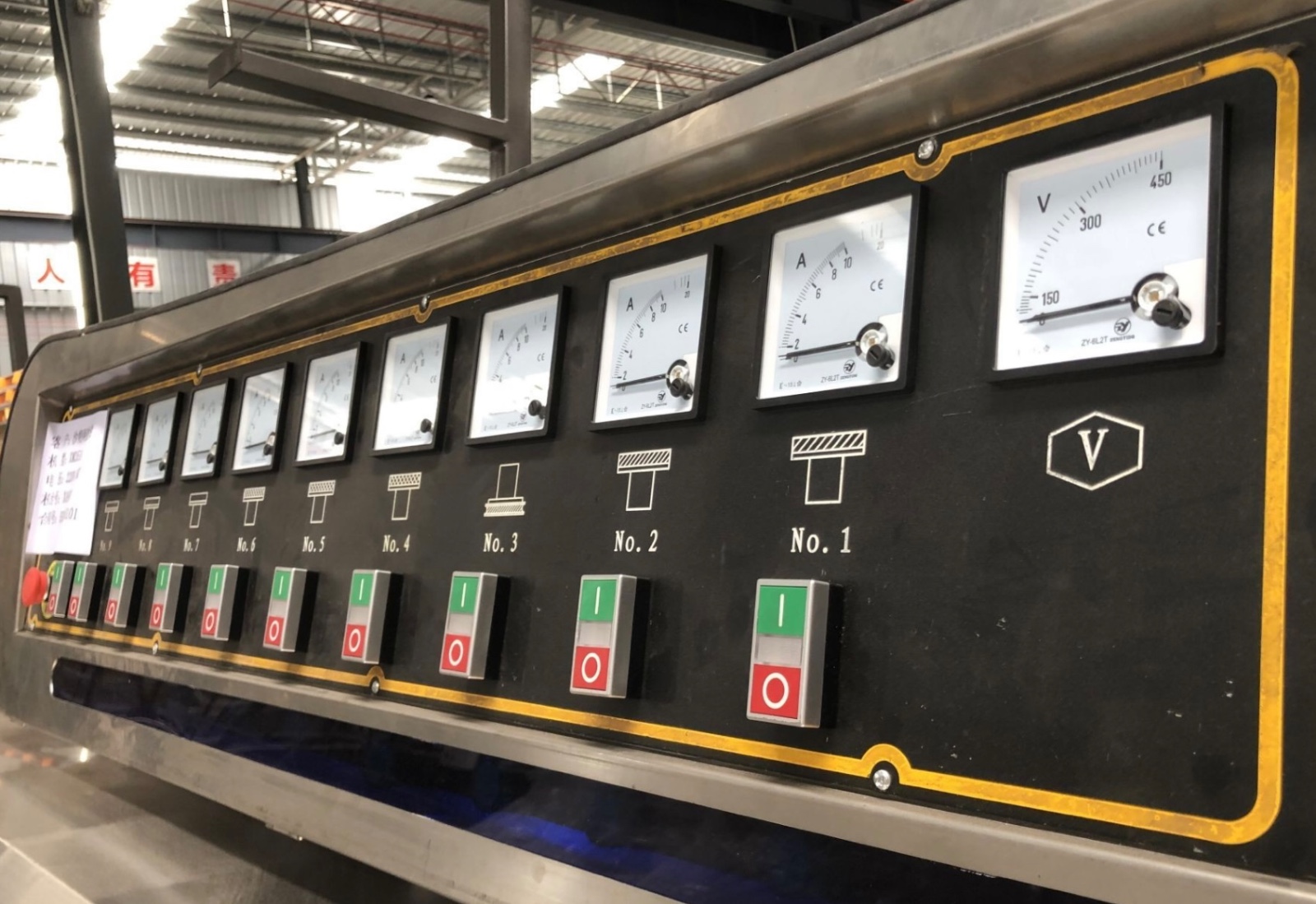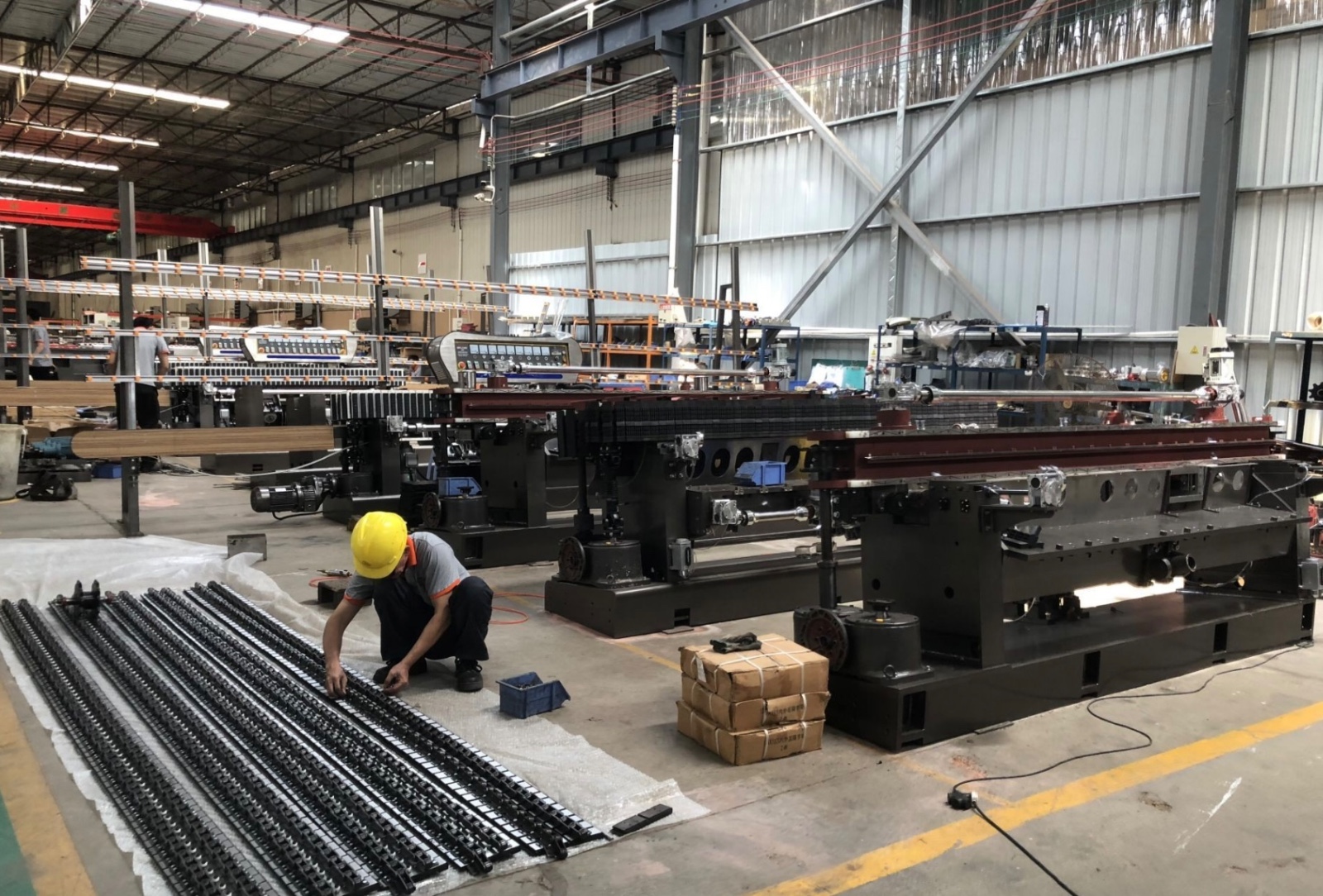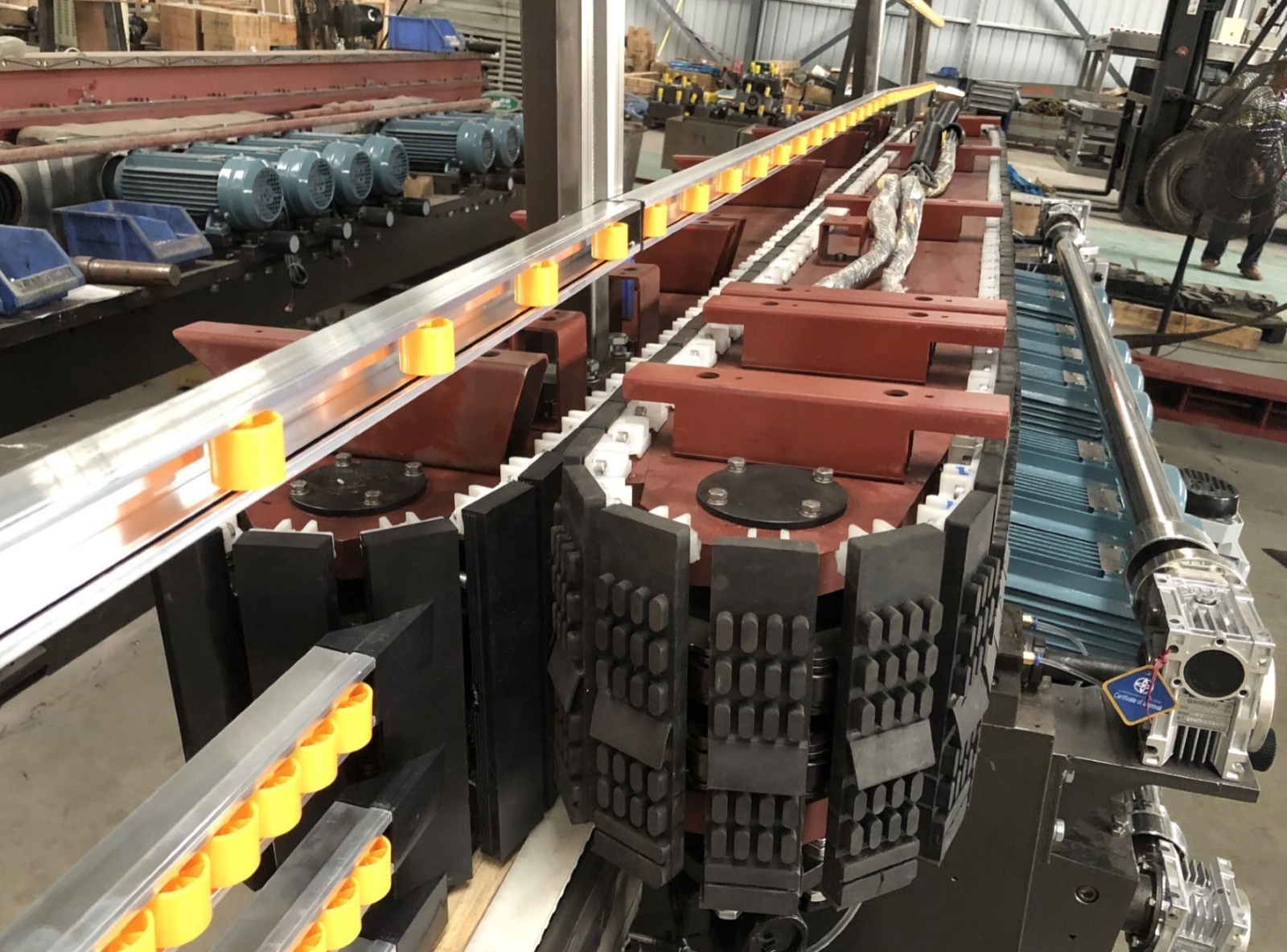An In-depth Introduction to Glass Beveling Machines
1. Overview of Glass Beveling Machines
Glass grinding machines are specialized industrial equipment designed to create precise, angled edges (bevels) on glass sheets. Glass processing Machines play a pivotal role in the glass processing industry, transforming raw glass into finished products with polished, aesthetically pleasing, and functional edges. glass grinding machine is widely used in architecture, interior design, furniture, automotive, and decorative arts, where the angled edges enhance light reflection, add visual appeal, and improve safety by eliminating sharp corners.Glass grinding machine
The core function of a glass processing machine to grind and polish the edge of a glass sheet at a specific angle (typically between 0° and 60°, though customizable for specific applications). Glass beveling machines combine mechanical precision with advanced control systems, allowing for consistent results across various glass types, thicknesses, and sizes.glass processing machine glass grinding machine ,mirror glass edging machine
2.Core Components and Their Functions
A glass processing machine consists of several interconnected components, each contributing to the grinding, polishing, and handling of glass. Below is a detailed breakdown of key parts:
2.1 Feeding and Conveying System
•Purpose: Transport glass sheets into, through, and out of the machine at a controlled speed.
•Components:
◦Conveyor Belts/Rolls: Made of rubber or polyurethane to grip glass without scratching. The spacing and speed of rolls/belts are adjustable to accommodate different glass sizes.
◦Feed Guides: Metal or plastic rails that align the glass sheet, ensuring it enters the grinding area straight and centered.
◦Thickness Sensors: Laser or ultrasonic sensors that detect the glass thickness upon entry, automatically adjusting grinding parameters (e.g., pressure, wheel alignment) for optimal results.
2.2Grinding and Polishing Stations
These are the heart of the machine, where the glass edge is shaped and refined through successive stages. A typical machine has 5–10 stations, each with a specific function:
•Rough Grinding Station: Uses a coarse abrasive wheel (e.g., diamond grit 60–120) to remove excess glass and form the initial bevel angle. This stage removes sharp edges and sets the basic contour.
•Polishing Stations: Use fine abrasive wheels (diamond grit 600–1500) or felt wheels with polishing compounds (e.g., cerium oxide) to achieve a glossy, transparent finish. Some glass grinding machine include a final buffing stage for ultra-smooth results.
Each station’s wheels are mounted on spindles powered by electric motors, with adjustable speed (typically 1,000–5,000 RPM) to match the glass type and desired finish. The Mirror glass edging machine features nine grinding heads, which work simultaneously to ensure a consistent, high-quality finish on the edges of glass sheets.



A glass grinding machine is a device used for grinding, polishing, and glass processing machine ,mirror glass edging machine applied in industries such as glass manufacturing
Mirror glass edging machine A mirror glass edging machine is a specialized device designed for processing the edges of mirror glass, ensuring safety, aesthetics, and compatibility with installation requirements. Glass beveling machine is widely used in mirror manufacturing, interior decoration, furniture production, and related industries.The mirror glass edging machine typically consists of a frame, grinding/polishing wheels (with different grits for rough grinding and fine polishing), a conveying system,mirror glass edging machine ,glass beveving machine. This makes it indispensable in industries where uniformity is critical, such as in the production of window panes, glass doors, mirrors, and automotive glass.
2. Role in the Glass Processing Ecosystem
A glass grinding machine is a device used for grinding, polishing, and processing glass, widely applied in industries such as glass manufacturing, furniture, construction, and electronics.
Its core functions include:
•Removing burrs and sharp edges from glass to make them smooth and rounded, enhancing safety.
•Grinding glass surfaces to improve flatness, eliminate scratches, or prepare surfaces with specific roughness.
•Enabling edge processing of various glass shapes (straight lines, curves, irregular shapes) when paired with different abrasives (e.g., grinding wheels, heads).
Common types based on processing methods and structures:
•Manual glass grinding machines: Suitable for small-batch, simple processing, relying on manual operation.
•Semi-automatic/fully automatic glass beveling machines: Achieve automated processing via mechanical transmission or CNC systems, offering high efficiency and precision for mass production.
Typically composed of a machine body, grinding mechanism (with heads/wheels), feeding system, and cooling system (to reduce heat and dust during grinding), glass beveling machine can adjust grinding parameters according to glass materials (e.g., ordinary glass, tempered glass) and processing requirements.mirror glass edging machine

